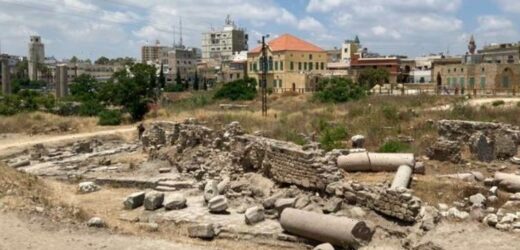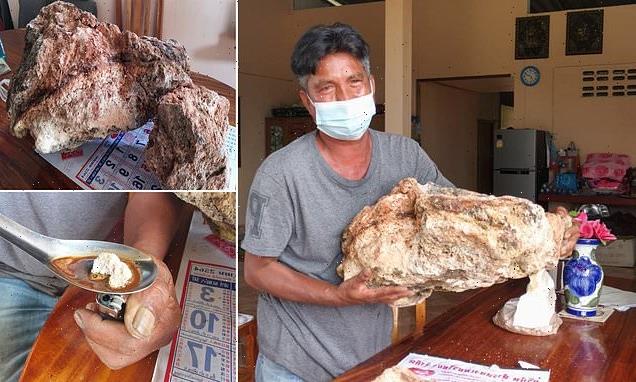Christianity ‘turned to archaeology to promote bible’ says expert
We use your sign-up to provide content in ways you’ve consented to and to improve our understanding of you. This may include adverts from us and 3rd parties based on our understanding. You can unsubscribe at any time. More info
The 5,000-year-old site is located on an island, and is based in an acropolis at the ancient Phoenician city. The researchers found that the rectangular-shaped temple was first constructed in the early Roman period, between about 31 BC and 193 AD. It underwent a major remodelling in the late Roman period, estimated to be between around 284 AD and 476 AD. But the archaeologists, who are team made up of Spanish, Lebanese and Polish experts, are yet to identify the deity that worshipped in the temple.
Francisco J. Nunez from the Polish Centre of Mediterranean Archaeology, University of Warsaw explained: “Its location on a podium in the most elevated area of the ancient island highlights this building’s particular status.”
The team also found that the structure was made from sandstone blocks and stood on a platform made of limestone and sandstone.
Dr Nunez also said that two 26-foot columns of Egyptian pink granite was positioned by a vestibule on one side of the temple.
And steps to the entryway were decorated with spectacular engraved geometric motifs.


This street is perpendicular to a narrower street, where another sanctuary was identified.
It was a structure that archaeologists now think contained two rooms and a courtyard on a north-south axis.
In one of them, researchers found an Egyptian bas-relief depicting Isis feeding Horus as a child.
The researchers also suspect that there may have been an underground chamber near the entrance to the temple.

But evidence suggests the magnificent structure was replaced during the Byzantine period by a basilica, which was destroyed by a tsunami in the sixth century AD.
Dr Nunez said: “Overlapping architectural remains, traces of natural disasters, rising sea levels and dynamic urban development in recent decades have effectively made it difficult to understand the character of ancient architecture.”
While Lebanese excavations in Tyre began in the Sixties, the majority of their documentation went missing following the chaos brought about by the 1975 civil war in the country.
But much of this work focused on the classical and medieval levels.
Dr Nunez added: “Given the historical importance of Tyre during the Bronze and Iron Ages, we know very few archaeological remains from these periods.
DON’T MISS
EU energy crisis: VDL panics as Russia chokes 70% of supplies [INSIGHT]
Putin ‘at war’ with EU as gas price hits record high – Merkel slammed [REPORT]
China forced to beg for Australia’s help after Taiwan war threat [REVEAL]


“Our knowledge of the ancient city is largely limited to Roman and Byzantine remains that are now concentrated in two archaeological parks: the sites al-Bass and the Basilica.”
One of the main aims of the project was to uncover the impact of nature, the history and evolution of urbanism had on the ancient island of Tyre.
Excavations from the Seventies revealed structures from different periods that still need further analysis to uncover the truth.
But excavations completed during that time did unearth some important evidence that help for understanding the history of settlement in this ancient city.
Researchers are planning to continue works next year and will focus on both the temple itself and the associated part of the city.
But Dr Nunez did explain that there is other fascinating structure out there to discover.
He said: “There is another monumental building in the north, perhaps another temple, that we would also like to explore.”
Source: Read Full Article


